PAGE 4.
Common wisdom says Japan is a tiny island nation with no space and no time for ruins (haikyo).
In actuality there are thousands. The general view that every square inch of land is worth a bazillion dollars is just not true. There are gaps in the facade that whole towns have fallen into, along with bizarre abandoned theme parks, ruined U.S. Air Force bases, and the tawdry remnants of pay-by-the-hour love hotels.
Hotel Royal Love Hotel | Waverley Hills Sanatorium |
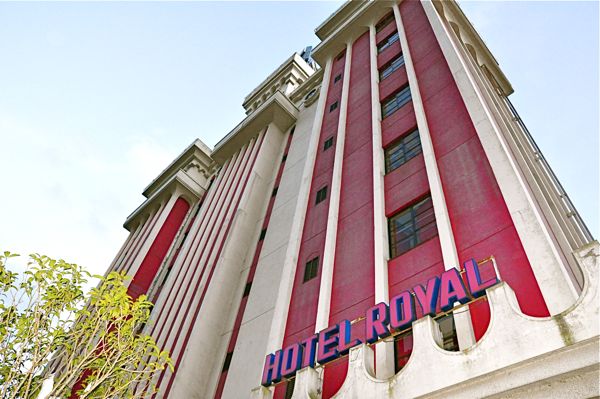 | 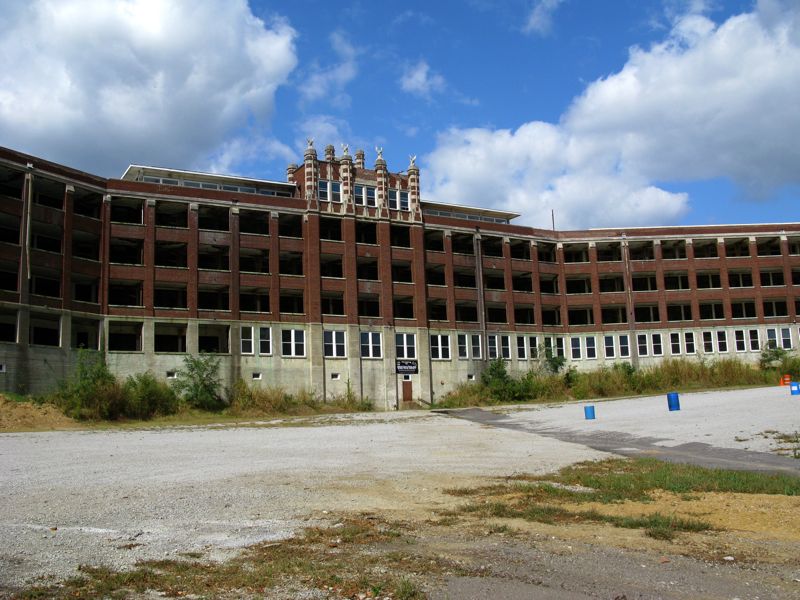 |
| The Royal Hotel haikyo in Kanagawa is the grand-daddy of all love hotels, streaking 7 empty stories up into the big blue sky, a giant vermillion flag on the banks of Sagamiko Lake calling out to all and sundry in a mega-watt alto- ‘Need some discreet time alone with your loved one? Come on down!’ | The Waverley Hills Sanatorium in Jefferson County, Kentucky, opened in 1910 in the thick of a Tuberculosis groundswell, then an incurable disease rife in the swampy backwaters of rural Loisville. The infected went to Waverley to be quarantined, and most likely to die- now the current owners hope to re-furbish and re-open it as a haunted hotel. |
Negishi 1. Racecourse Grandstand | Negishi 2. Secret Caverns |
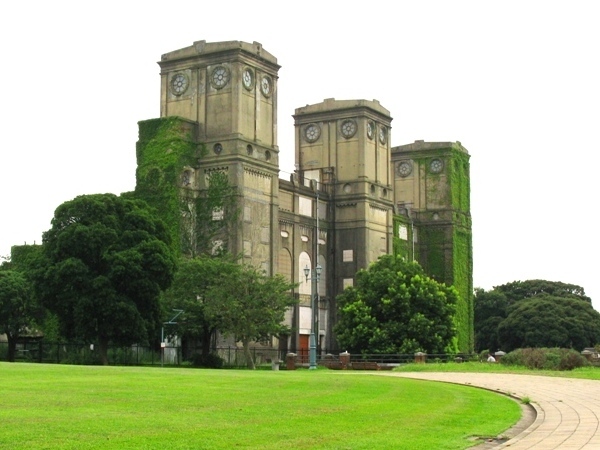 |  |
| The Negishi Racecourse Grandstand in Yokohama looms like an ancient 3-headed Titan over the Negishi Plateau. It once drew crowds of thousands to cheer from its elaborate bleachers, to wander its long hallways and admire its extravagant architecture. | Deep within the solid rock of the Negishi Plateau in Yokohama, spreading beneath the old race-course Grandstand and Yokosuka Naval Base, lies a twisting warren of hidden World War Two era caverns, reportedly filled with ancient munitions and top-secret military dossiers. |
Kemigawa Transmission Station | Hyaku Ana Cliff Tombs |
 | 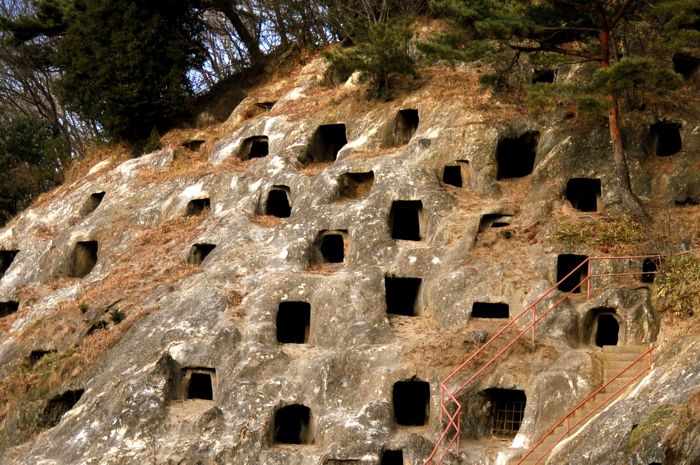 |
| On December 2nd 1941, just 6 days before the Japanese opened hostilities in the Pacific War against the Allies by bombing Pearl Harbour, a coded signal went out from the Kemigawa Transmission Station in Tochigi: CLIMB MT. NIITAKA 1250; the order to join the war. CLIMB MT. NIITAKA referred to Niitaka mountain, the tallest in all of the then-Japanese Empire (now Taiwan). | The Hyaku Ana Cliff Tombs in Saitama are ancient, easily some of the oldest ruins in all of Japan, dating back 1380 years to a time of almost pre-history. A second layer of history was added in the Second World War when deep munitions tunnels were carved into the rock; gloomy storage spaces to keep serious weaponry safe from Allied bombing raids. |
Tama Lake 1. Red Blossom Restaurant | Tama Lake 2. Akasaka Love Hotel |
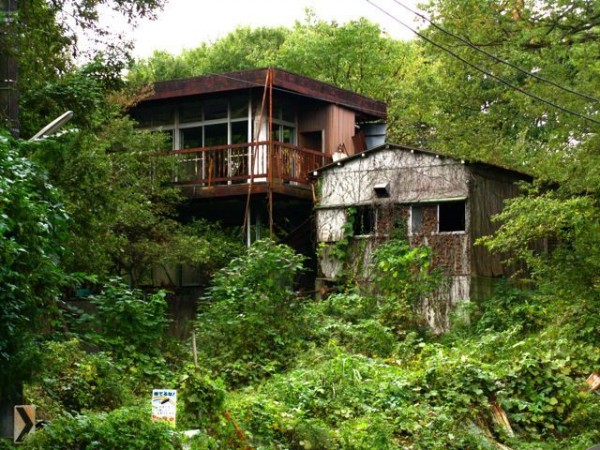 |  |
| The Red Blossom Restaurant Haikyo on the Lake Tama ring road rests as a peaceful shrine to the yin and yang of Nature, showing in gentle tones both her power to tear down the old, and raise up the new. The restaurant itself sits on a small hill like a rusted old tank, off-kilter, gap-toothed, and leering to the side. | The Akasaka Love Hotel Haikyo in Higashi-Yamato, Tokyo, clearly suffered for lack of passing traffic. Inside, its gaudy rooms still sing of forbidden pleasures, the walls plastered with bright helios, lurking cheetahs, and naked Bathsheba`s, though I doubt any lusty couples have joined in their bawdy chorus for some time. |
Tama Lake 3. Dead Toyota | Tama Lake 4. Black & White |
 | 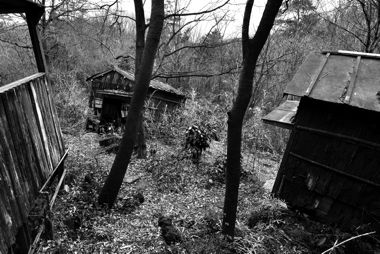 |
| An old Toyota once-buried by summer`s foliage reveals its winter bones. | The ruined love hotels and ancient restaurants of Tama Lake in silvery black and white. |
Pearl Love Hotel | Yui Grand Love Hotel |
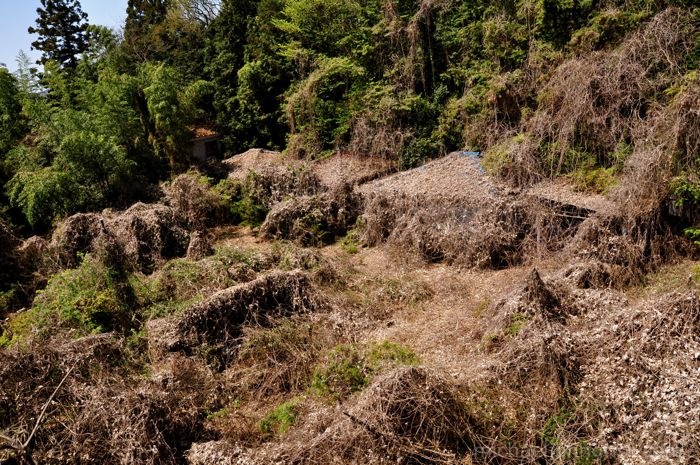 | 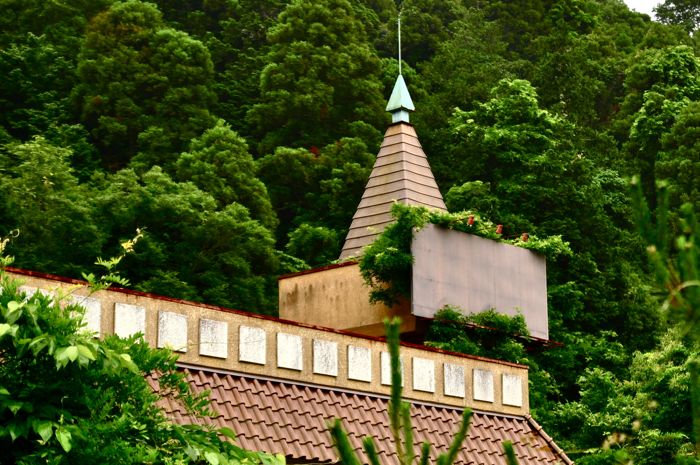 |
| The Pearl Love Hotel Haikyo in Tochigi is a wreck in camouflage, deeply nested underneath a blanket of scraggy brown vines. Rooms lie in embers, grown through with ferns; once-bohemian beds, chaise longues and chandeliers lie scrapped, dropped, and despoiled with the nests of birds, spiders, and the homeless. | The Yui Grand Love Hotel is an abandonment with a more sordid past than usual, if urban legend is to be believed. According to the story, a gang of bosozoku riders kidnapped a schoolgirl into one of its rooms, where they abused and killed her. |
Queen Chateau Soapland 1. First | Queen Chateau Soapland 2. HDR |
 |  |
| The Queen Chateau Soapland Haikyo in Mito, Ibaraki, is at once a grand but squalid folly. A bath-based brothel rising 5 fairy-tale stories into the sky, cornered with towers and capped with bright red tile, it represents an era gone mad with indulgence, audacity, and hopefulness. | It was my second time to visit the ruins of the Queen Chateau. It’s a bizarre abandonment, a giant soapland in the midst of a cluster of still-functioning soaplands presiding over them like the towering castle in the suburbs in Edward Scissorhands. Within its walls sex was transacted for money on a grand scale. |
Gulliver’s Kingdom (RIP) | Namegawa Island Bird Park |
 | 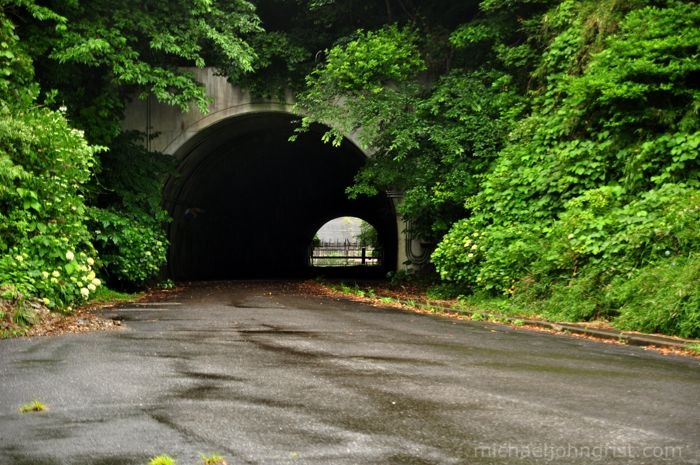 |
| Gulliver once rested in the shadow of Mt.Fuji, bound and nailed to the ground by the hair. His giant body was the main attraction of the now defunct and dismembered Gulliver’s Kingdom Theme Park in Yamanashi, built in 1997, closed in 2001 due to defaulting bank loans, and demolished around 2007.Image from here. | Namegawa Island is a big failed bird theme park, one that up until fairly recently held its own against the twin Disneys standing astride the Chiba peninsula, past which any bird-aficionados would have to run the gauntlet to reach it. It sits perched on a precarious jag of forested coastline, completely blockaded from the mainland by a wide swath of mountains stretching from edge to edge. |
Sports World 1. Hotel and Grounds | Sports World 2. Water Park |
 |  |
| Sports World occupies an idyllic position at the crown of the Izu peninsula, overlooking a wide swathe of richly forested mountains and valleys. In its heyday it was a sports and relaxation haven, featuring tennis courts, miniature golf, a dive pool, restaurants, a hotel, a huge wave pool, a spa, and a gym. | The Sports World Water Park in Izu is a well-hidden gem in the crown of Japan’s abandoned theme parks. Tucked away from the main theme park down a slim passage over-awed by rabid weeds, its brilliant blue umbilical water-slides snaking and inter-twining through the verdant green jungle canopy. |
Sports World 3. HDR | Sports World 4. Retrospective |
 |  |
| Sports World is probably my favourite haikyo in Japan. In an upcoming top ten list of ruins in East Japan I’m putting together, it will more than likely be number 1. It’s just so awesome. It’s massive, 20 years abandoned but relatively intact, and set in a really beautiful forested mountain area. | I heard recently that Sports World has been demolished; apparently there’s nothing left now but the car park and a few minor buildings. |
Russian Village Theme Park | Kappa Pia Theme Park |
 |  |
| The Russian Village Theme Park in Suibara, Niigata, sprawls empty and forlorn atop a small hill set back from the main road, its giant fake mammoths resting unseen in their dark and musty show hall, and the vibrant blue onion-domes of its vaulting ‘Russian’ church slowly tarnishing to white. | The Kappa Pia Theme Park in Saitama prefecture was in the process of being demolished when I went to see it. The grand rusted rollercoasters, creaking tea-cup rides, teddy bear-winning sideshows and themed restaurants I’d hoped to see were all gone, leaving nothing but bare concrete platforms with rust-pocked rivet marks where rides had once been. |
There’s just one page ahead. Don’t flag now, we’re nearly there.
Page 1 | Page 2 | Page 3 | Page 4 | Page 5 |

Comments 12
What a sadly awesome page. “Ozymandius East”.
Great shots! I’d love to visit places like those, it looks amazing, yet quite frightening! How do you find them?
Author
David- Thanks, that’s a great title. Maybe I’ll borrow?
Val- Thanks so much, about half come from a book I have, and the other half from various tip-offs or random finds of my own. Only really frightening when I’ve gone solo, and at night. With friends it’s more just like fun.
Hello Michael,
I don’t know whether you’ll be having a look at this, but I simply wanted to thank you for this awesome website which have caught my interest for the past 2 days 🙂
Your haikyo pictures and articles are captivating and I started having a look at your writings as well.
I should be moving to Japan in January, and feel truly excited that I might be visiting such places. My interest in ruins started as a child. Fairly close to my house (in France) was an old psychiatric complex that, I realize know, was the ideal haikyo. The old building was fairly unstable but the newer one was amazing : big windows, furniture and medical equipment… This place was the absolute nightmare of my childhood and it took me 15 years to get inside, just before they demolished it!
Anyways, all this to say thank you for your amazing work 🙂
Cheers
Hello:
I think you used to have a link to my site, previously urbex.mikeonline.ca. I would like to have such an exchange again. Your site is currently listed on my site, which has changed to http://urbexobsession.com.
Thanks for your time.
Hi, could I use this picture: http://www.michaeljohngrist.com/wp-content/uploads/2009/08/sherman-tank-off-garapan-beach-saipan-90021.jpg for my article? Of course with a proper attribution and a link to your website.
Hi there, I really love your photos from the Nara Dreamland. I’m headed to Osaka at the end of the month, would you be kind enough to suggest “haikyos” (I learnt this word here!) that I could check out around the region? I’m looking forward to head to Nara Dreamland.
Hi MJG
One of my all-time favourite movies is Sen to Chihiro no Kamikakushi, so reading your blogpost about ruins in Japan has probably been the most exciting thing I will be doing this Christmas! 🙂 Hope you are still exploring and sharing – I see this post is nearly a decade old now.
Take care.
R
I was trying to find information about the old Yawata Steel Works and the old Space World Amusement Park in Kyushu, to see if I could sneak in and photograph, then I found your site. What really grabbed me was the piece on Camp Drake, my first assignment in the Air Force. So, anyway, thanks for the memories and keeping this site up.
Love lov e love this site
Sir I would like to use the following photo of yours on my site an one of the Tachikawa AB pages Tachikawa
Air Force Base re claimed by nature, Tachikawa Air Force Base Haikyo11 and Tachikawa Air Force Base Haikyo24.
Thank you
I was stationed at Fuchu AB 1966-1969 and my first daughter was born in Tachi Hospital.
We had a small car (as did everyone else) and went to Yakota Base for less expensive shopping than Fuchu, thanks to the Fuchu PX run by the base commanders’ wife…too rich for an Airman’s salary.
Tremendous memories from our time in Japan.